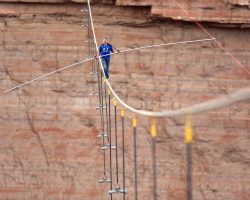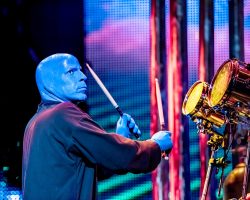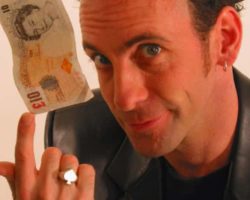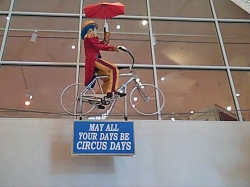Easy-to-perform magic tricks for the beginner
While all magic tricks, if they are well performed, seem hard to do, many of them require no special skill or expertise, just a thorough rehearsal of the steps involved.
The best magic tricks are real crowd pleasers, and a few magic tricks, if performed in the right context, will not be out of place at most gatherings.
Magic tricks can be surprising, amusing, and can make people think. Many are based on scientific principles, although most people don’t associate magic with science. The best effects are based on simple premises.
Many of the best magic effects create disbelief and astound the audience. Most people want to know how a magician performs all of those incredible, fascinating effects and illusions. Most magicians realize that wanton exposing of magic tricks merely to satisfy people’s curiosity is bad for the art, but teaching those who have a sincere desire and interest in learning magic is admirable.
The tricks taught here were chosen because their effects are good and they are easy to learn. The equipment required, such as bottle caps, matchbooks and matchboxes, can be found easily around the household.
While these tricks can be read and learned in just a few minutes, you are well advised to practice all of them a few times before performing them for anybody, even for your friends and family. Even the simplest tricks have pitfalls and these can only be learned by doing a few practice sessions. A little practice will also give you the self-confidence in performing that is essential for every effective magician.
The most important thing to remember is that the success of any magic trick depends on its presentation. The simplest trick can be turned into a magical masterpiece with a bit of showmanship. Learn to perform these tricks and all those you learn in an entertaining manner and you’ll soon discover why magic is such a great hobby.
The Flower In The Buttonhole
A nice trick for the stage
cool magic tricks and how to do them This is a good trick for more formal magic shows with a larger audience, such as a talent show. Walking on stage, you comment that there seems to be something missing from your appearance. What you need is a flower in the buttonhole of your jacket’s lapel. You simply snap your fingers and a flower instantly and visibly appears in your buttonhole!
What you need:
A suit jacket, a length of black elastic and an artificial flower.
How you fix it:
Attach the artificial flower to the piece of elastic and thread the other end of the elastic through your buttonhole. Next, tie a safety pin onto the other end of the elastic (don’t make the not too tight, as you may need to experiment with the length of the elastic).
Run the elastic through the buttonhole and then behind your right lapel down towards the bottom. Pin the safety pin as far away from the buttonhole as possible while still being hidden behind the lapel. This will give the elastic a bit more “stretching room.” The elastic should be taut. Shorten and adjust the length of the elastic as necessary so that the flower stays in place.
How you do it:
Before walking out on stage, you pull the artificial flower over to your armpit and hold it there by pressure of your arm. When you are ready to perform, walk out on stage, comment on your needing a flower, and release the pressure of your arm, allowing the flower to fly to your buttonhole. Wear a dark suit so the elastic will not be noticed.
The Three Rattle Caps Game
You show three plastic caps from milk cartons, all the same color. One of them has a steel ball inside, which you demonstrate by rattling the cap. Now you mix the three caps around by rearranging them in a few moves on the tabletop. Even though an audience member tries to keep a close eye on the caps as you mix them, they always guess wrong as to which one rattles.
What you need:
Four plastic caps from milk cartons, a piece of cardboard, a small steel pellet and glue, such as contact cement, that will adhere to plastic.
Preparation:
Trace around one of the caps with a pencil four times on the piece of cardboard to create templates for four cardboard discs. Cut them out along your outlines. Glue a disc to the open side of each of the four milk carton caps, placing the steel ball in one of them before you do so.
Before the trick begins, attach the cap that rattles to your left arm with a rubber band under the sleeve of your shirt so nobody can see it.
How you do it:
Tell the audience that a common trick that carney operators and street hustlers use is the three shell game, and that you would like to demonstrate this with your own version.
Place the three caps on the table and “demonstrate” to the audience that only one of them rattles by lifting it off the table and shaking it slightly with your left hand (the hidden cap is actually what rattles).
With your right hand, slide the caps around on your table three or four times, so that the audience still thinks that they can keep track of the cap that rattles. Have the audience member point to the cap that they think has the rattle. With your left hand, lift up a different cap and show that it is the one that rattles.
You can repeat this a couple of times, and the audience member will unsuccessfully guess which rattles every time. It is a good idea to stop after two or three times so that the audience doesn’t notice that you use the same hand to shake the caps each time.
The Disappearing Matches
You pick up three matchboxes from the table one at the time and shake them. The audience can clearly hear the sound of matches rattling in each box. Wave your hand over the boxes and then open each one. Show that the matches have vanished and that each contains a differently-colored ribbon or silk handkerchief.
What you need:
Four matchboxes, three differently colored ribbons or pieces of cloth and a rubber band.
How you fix it:
Empty all of the matches out of three of the matchboxes and half the matches out of the fourth matchbox. Place a square of colored cloth or a differently colored ribbon in each box. With the rubber band, attach the half-filled matchbox to your left arm under your sleeve so that no one can see it.
How you do it:
This trick works on a similar principle to the preceding one. Pick up the boxes on the table one at a time with your left hand and shake them. The audience hears the matchbox hidden up your sleeve and thinks it’s the matchbox you are shaking that is making the sound.
Wave your right hand over the boxes to make the matches “vanish,” and then open each one, showing the silk or colored ribbon inside. The audience can look at the matchboxes all they desire and they will not discover the secret. Reach up your sleeve behind your back and remove the hidden matchbox.
Now here are the REAL secrets of magic!
Here’s how to become a true Master Magician, by the author of this lens!
The Zombie Finger
magic tricks revealed You show a box that you say you found in a strange antique shop. Lifting the lid, you show a very realistic human finger inside, which you invite the viewers to touch. When they bend in close, the finger suddenly jumps at them!
What you need:
A small cardboard jewelry gift box, the type that has a layer of cotton batting inside, and the lid.
Preparation:
With a pointed pair of scissors, cut a small hole (just large enough to slip a finger through) slightly off center in the bottom of the box. Also, make a small hole in the cotton at about the same place. Make sure you can slip your finger through the hole(s). Place the lid back on the box.
If you slip your middle finger through the hole at the bottom of the box and bend it towards you while straightening out your other fingers, it will look for all the world like a real finger laying inside the box.
Put the lid back on the box and place the box inside or behind another object on the table or in your pocket.
How you do it:
Grab ahold of the box with your right hand, while at the same time slipping your finger through the hole in the bottom and bending it toward yourself. You should be able to do this with the lid still on the box.
Bring the box out into view and tell the story of finding it in an antique shop. At the proper moment in your story, lift the lid and show the finger inside the box. To make the finger seem to “jump,” you simply straighten out the finger in a quick movement.
Tip: You can apply makeup effects to your middle finger to give it a more ghoulish appearance before the trick begins.
Eyes Behind Your Back
You hand a member of the audience three or four matchbooks, each containing a different printed design or advertisement on the cover. You turn your back and have them mix up the three matchbooks and hand them to you behind your back. You are able to announce the cover design or advertisement of each and bring them out from behind your back without looking.
What you need:
A belt, two sets of identical matchbooks with different printed cover designs, a jacket or sports coat.
Preparation:
Hang the duplicate matchbooks on the back of your belt in a memorized order as shown. Under cover of your jacket, no one will be able to see these.
How you do it:
When the audience member hands you the match packs, you simply place them into your rear pants pocket behind your back. In announcing the printed design of the matchbook you are about to bring forward, you really reach under the back of your jacket and remove the corresponding matchbook from your belt. Be sure to keep your other hand behind your back so the audience thinks you are still holding the matchbooks. Like most magic tricks, this should only be done only once for the same audience.










